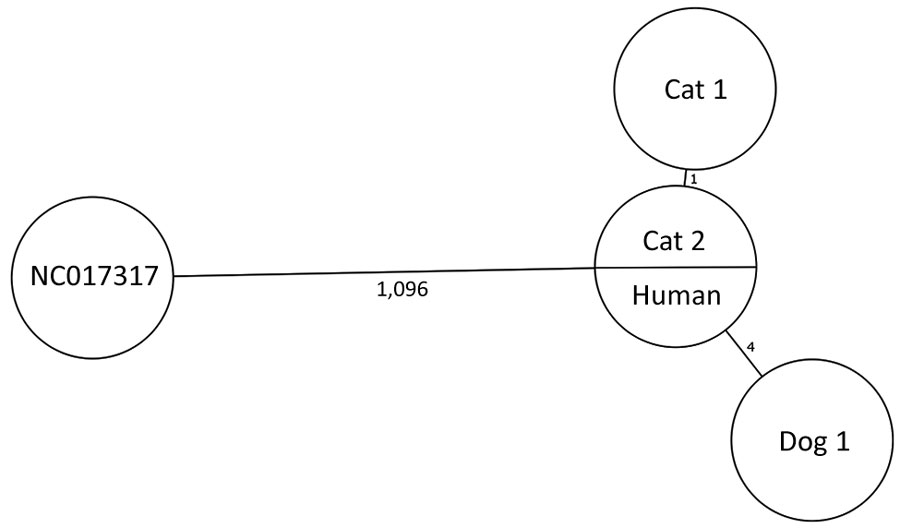Volume 28, Number 6—June 2022
Dispatch
Zoonotic Transmission of Diphtheria from Domestic Animal Reservoir, Spain
Figure

Figure. Core-genome multilocus sequence typing–based minimum spanning tree of all toxigenic Corynebacterium ulcerans strains associated with the zoonotic transmission of diphtheria in Spain in 2019 compared with reference strain NCTC_NC017317 from GenBank. Branches are labeled with the number of allelic differences between strains. European Nucleotide Archive accession numbers: human strain, ERR4880084; CAT1 strain, ERR6177889; CAT2 strain, ERR6177890; DOG1 strain, ERR6177891.
1These first authors contributed equally to this article.
2Authors in the Case Study Investigation Group are listed at the end of this article.
Page created: April 18, 2022
Page updated: May 22, 2022
Page reviewed: May 22, 2022
The conclusions, findings, and opinions expressed by authors contributing to this journal do not necessarily reflect the official position of the U.S. Department of Health and Human Services, the Public Health Service, the Centers for Disease Control and Prevention, or the authors' affiliated institutions. Use of trade names is for identification only and does not imply endorsement by any of the groups named above.